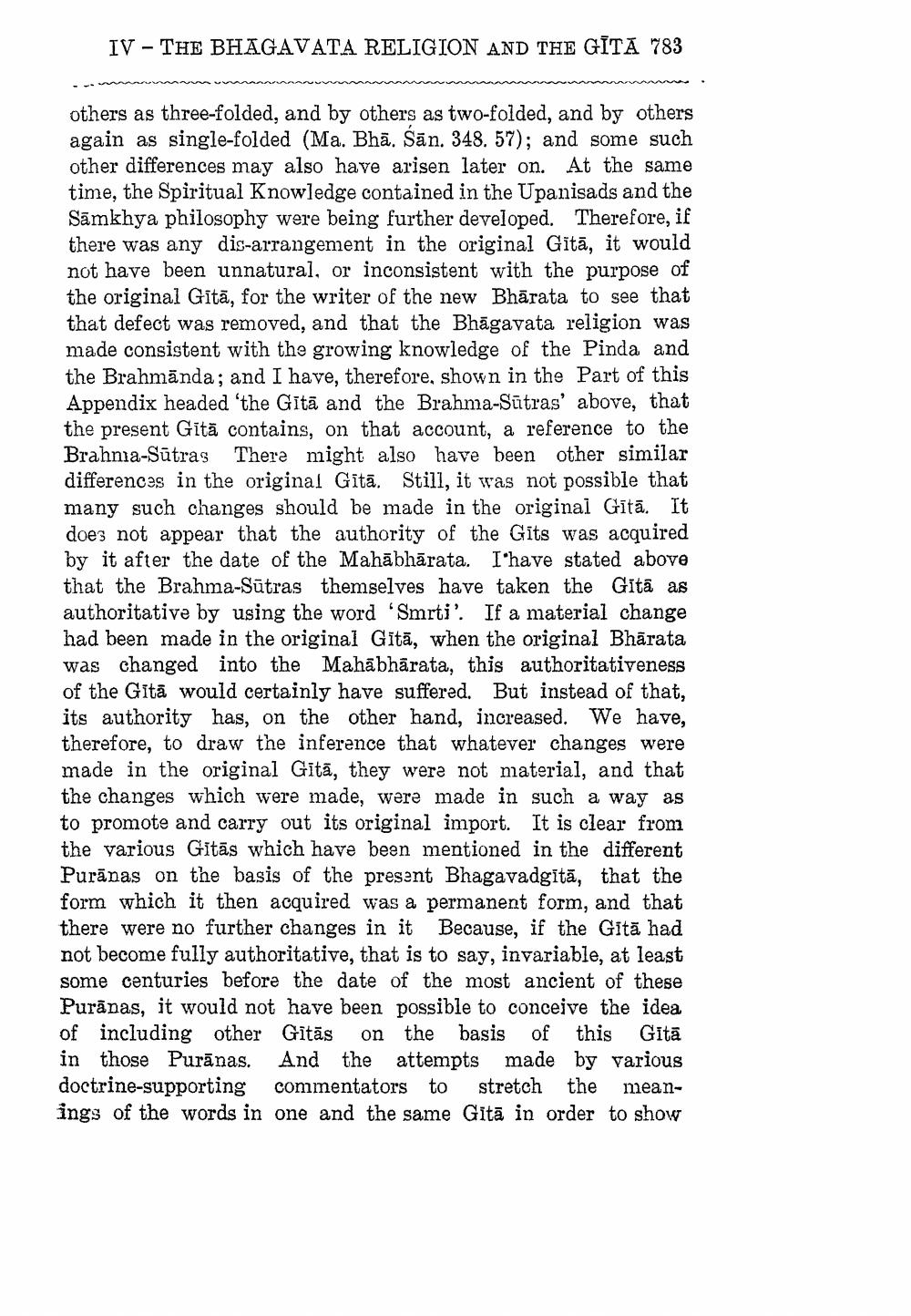________________
IV - THE BHAGAVATA RELIGION AND THE GĪTA 783
others as three-folded, and by others as two-folded, and by others again as single-folded (Ma. Bhā. Sān. 348. 57); and some such other differences may also have arisen later on. At the same time, the Spiritual Knowledge contained in the Upanisads and the Sāmkhya philosophy were being further developed. Therefore, if there was any dis-arrangement in the original Gītā, it would not have been unnatural, or inconsistent with the purpose of the original Gītā, for the writer of the new Bhārata to see that that defect was removed, and that the Bhāgavata religion was made consistent with the growing knowledge of the Pinda and the Brahmānda; and I have, therefore, shown in the Part of this Appendix headed 'the Gītā and the Brahma-Sūtras' above, that the present Gītā contains, on that account, a reference to the Brahnia-Sūtras There might also have been other similar differences in the original Gītā. Still, it was not possible that many such changes should be made in the original Gītā. It does not appear that the authority of the Gīts was acquired by it after the date of the Mahābhārata. I have stated above that the Brahma-Sūtras themselves have taken the Gita as authoritative by using the word 'Smrti'. If a material change had been made in the original Gītā, when the original Bhārata was changed into the Mahābhārata, this authoritativeness of the Gītā would certainly have suffered. But instead of that, its authority has, on the other hand, increased. We have, therefore, to draw the inference that whatever changes were made in the original Gītā, they were not material, and that the changes which were made, were made in such a way as to promote and carry out its original import. It is clear from the various Gitās which have been mentioned in the different Purānas on the basis of the present Bhagavadgitā, that the form which it then acquired was a permanent form, and that there were no further changes in it Because, if the Gitā had not become fully authoritative, that is to say, invariable, at least some centuries before the date of the most ancient of these Purānas, it would not have been possible to conceive the idea of including other Gītās on the basis of this Gītā in those Purānas. And the attempts made by various doctrine-supporting commentators to stretch the meanings of the words in one and the same Gitā in order to show




